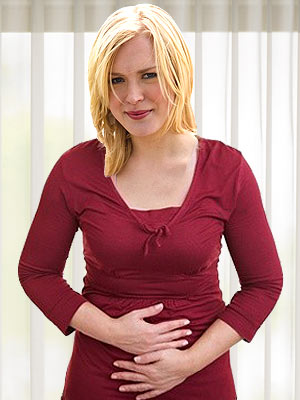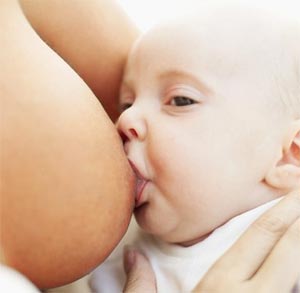Early pregnancy cramping

In most women cramping can be construed as quite a normal sign of pregnancy. Most women get concerned by cramping quite wrongly thinking of cramping as an ominous sign of a possible miscarriage. This is not so, and cramping does not mean that she has missed her chance of getting pregnant if she is trying to have a baby.
Cramps indicate that the muscles and uterus are becoming ready for the expansion that is bound to occur in the months to come. The hormones cause ovarian cramps, with the implantation of the egg. The embryo which burrows into the lining of the uterus causes cramps along with spotting.
Why cramps in pregnancy?
Cramping is common and usually very normal during pregnancy. Cramping can occur when the uterus begins to stretch and grow after the implantation of the egg. This is called 'implantation cramping' as the cramping occurs when the egg
attaches itself, or implants into the uterus. All women need not feel this
cramping and in most of the cases it can easily go unnoticed.
During pregnancy, it is said that the uterus will grow to 1000 times its original size which means that cramping pain can be expected. Mild cramping which is very similar to menstrual cramps is not a cause for alarm during early pregnancy.
Round ligament pain is another type of cramping during pregnancy. This is cramping that occurs when the uterus expands and grows in order to support the weight of her uterus as the baby grows. Many women complain about this cramping in early pregnancy and this is the type of cramping experienced by most pregnant women.
In case of some women who have had more than one child, a very strong, shooting pain can be felt in the groin or hip area. While these pain subside while walking or standing, it can become intense when she first rises from a lying or sitting position. The pain also varies each time it strikes.
During each pregnancy, the tendons in the groin tend to become weak and cramping stronger. To combat this type of cramping, it is good to exercise and strengthen the muscles in this area. Doctors advise a lot of walking during pregnancy as this not only help with the cramp but also make the labor and child birth process smoother.
Sometimes cramping can be accompanied by spotting. This spotting is usually light and lasts for two to three days. If the period is late and she has cramps, then it is time to undergo a pregnancy test.
Leg cramps
During pregnancy, at various times she might have cramps in her legs and feet. This is due to changes in the way her body processes, or metabolizes calcium. Fatigue and fluid accumulation in her legs are also thought to contribute to leg cramps.
One of the ways to prevent leg cramps is to get enough calcium through non-fat calcium rich foods. Calcium supplements can also be of help. Wearing a supporting hose to limit the effect of fatigue and swelling during the day and alternate periods of rest with feet up can help to combat fatigue and fluid accumulation in her legs.
Gentle muscle stretch can help relieve foot cramp. The foot can be flexed towards the body in case of a sudden leg cramp. Wrapping warm heating pads or warm moist towel around the muscle can also help relax the cramped muscle.
Muscle fatigue is not the only reason for suffering leg cramps. With too much of phosphorus in snack foods and soft drinks and too little calcium and potassium circulating in her blood, muscle spasms are caused.
When to consult the doctor?
If she notices swelling or tenderness in her leg then it is better to contact the doctor. Statistics reveal that in rare cases, about one in 2,000 pregnant women can develop venous thrombosis, or blood clot which requires immediate medical attention.
She needs to understand that cramping can continue into the second and third trimester as the uterus continues to grow and her body prepares for labor. If cramps increase in intensity and heavy spotting is seen past the sixth week, or if spotting becomes heavy even in the first few weeks, it is better to consult her doctor.
If cramping is all on one side of the lower abdomen area, this could signify ectopic pregnancy. Cramps can come after eating in the upper abdomen, just under the rib cage, and can be seen in some to extend into the right shoulder area. This may indicate gall bladder disease which sometimes affects pregnant women.
Although, cramping is not unusual during early pregnancy, if the cramping gets too intense and occurs more often, it is better she calls a doctor and gets reassured.
Relief from cramps during pregnancy
A banana or a glass of milk before bed can quickly boost calcium and potassium. An herbal or a vitamin supplement can also be consumed, after discussing with a medical specialist. Muscle cramps can be managed by some practical tips which include:
- Avoiding standing and sitting with legs crossed for long durations of time.
- Ankles can be rotated and toes wiggled when sitting, eating dinner or watching television.
- Calf muscles can be stretched several times before going to bed.
- Muscle stretch: Straighten leg, heel and gently flex the ankles and toes. It could hurt first, but the pain will gradually disappear. The cramp can be massaged with a hot water bottle. Walking around for short durations can help.
- To soothen cramps, a warm shower cascading on the back or heating pad on the lower back will help.
Top of the Page: Early pregnancy cramping
Tags:#early pregnancy cramping
 Planning Pregnancy
Planning Pregnancy Pregnancy Diet and Exercise
Healthy Weight Gain in Pregnancy
Pregnancy Food Cravings
Pregnancy Heartburn
Improving Fertility after 35
Ovulation Test Strips
Pregnancy Symptoms
Early pregnancy cramping
Early pregnancy Test
High Risk Pregnancy
More on Pregnancy
 Natural Childbirth
Natural Childbirth Premature Birth
Pregnancy Massage
Pregnancy Problem
Pregnancy Due Date Calculator
Amniocentesis
Twin Pregnancy
Ectopic Pregnancy
Pregnancy Morning Sickness
Molar Pregnancy
Pregnancy Ultrasound
Constipation during pregnancy
Insomnia during Pregnancy
Smoking during Pregnancy
Teen Pregnancy
Exercise during pregnancy
Late Term Abortion
Sign of Miscarriage
Pregnancy Fatigue
Pregnancy Gas
Pregnancy sciatica
Belly Wrap after Pregnancy
Emotional Health during Pregnancy
Lactating Mother
Infertility
Recurrent Miscarriage
Pregnancy Varicose Veins
Postpartum Depression
Epidural
Premature Infant
Top of the Page: Early pregnancy cramping
Popularity Index: 101,779

